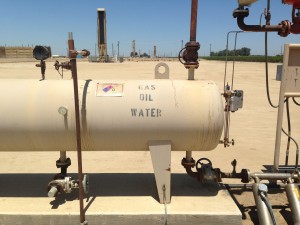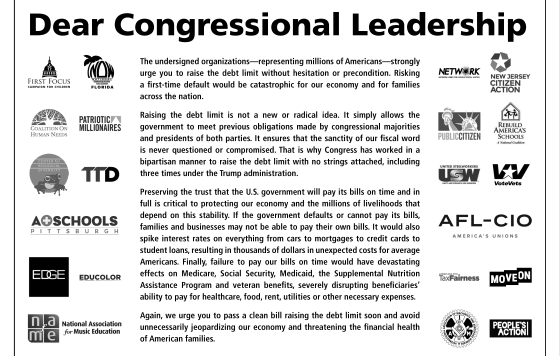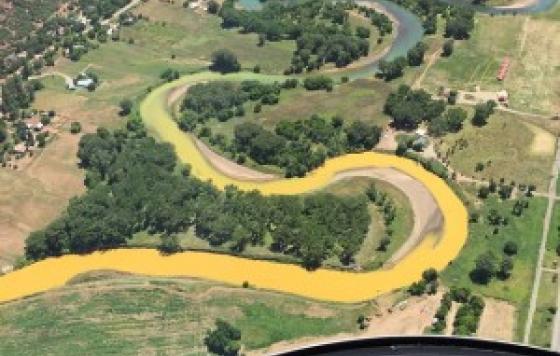
By Andrew Grinberg, California Oil and Gas Program Manager - Follow Andrew on Twitter (@AndrewBGrinberg)
The referenced media source is missing and needs to be re-embedded.
This is one of the most outrageous things we’ve heard in a long time. As California faces one of the worst droughts in recorded history, State officials have disclosed that California has allowed the injection of oil and gas wastewater and other contaminated fluids into aquifers that are suitable to be used as drinking water. Oil and gas wastewater is nasty stuff, high in salinity, toxic chemicals and sometimes containing radioactive material. New data just revealed that the wastewater from fracking in California contains cancer-causing benzene and other toxic chemicals hundreds of times the legal limit for drinking water.
The last thing we want is for these chemicals to end up in our drinking water, but as of now oil companies are continuing to inject even more waste into the aquifers. Outrageously, the state agency in charge of overseeing these operations (the Division of Oil Gas and Geothermal Resources or “DOGGR”), has continued to allow these waste injection activities, despite identifying more than 2,000 wells that are actively injecting into federally protected sources of drinking water.
About 450 of the active wells are to dispose of oil and gas wastewater. Another 1,600 are used or enhanced oil recovery (EOR), where oil companies inject water (often the contaminated wastewater) or steam, to facilitate more oil production. For any type of injection project, an oil company needs a permit to inject , and the state is only supposed to give permits to inject into aquifers that the federal government has determined will not and cannot be used for drinking water. For some reason DOGGR forget to make sure of that important requirement THOUSANDS OF TIMES. Oops.
Back in 2011 US EPA put DOGGR on notice for numerous shortcomings in their implementation of the Safe Drinking Water Act, Underground Injection Control (UIC) Class II program. That's the regulatory program that oversees oil and gas injection projects. DOGGR took over primacy of that program in 1983 and has been running it ever since. The 2011 critique cited inadequate geologic review, bad record keeping, and not enough expert staff to carry out inspections. For the last three and a half years, DOGGR has not done anything to address EPA's concerns, until now. Meanwhile, EPA has been under their own fire for failing to hold state agencies accountable for proper implementation of these programs. There's plenty of blame to go around! Additionally, we have issued our own critique of this federal program which is designed to write off potential sources of drinking water in order to allow oil, gas and mining companies to dispose of their waste.
After it was discovered that DOGGR had allowed injection into underground sources of drinking water, EPA called on DOGGR to take immediate steps to update their program. On Friday February 6, DOGGR turned over their plan to US EPA on how they were going to proceed and disclosed a list of 2,500 wells, 2,000 of which are active, injecting into non-exempt aquifers. DOGGR set out a two-year timeline to bring the program into federal compliance, yet is allowing injection in these problematic wells to continue while they investigate. The plan includes no well closures until October 2015, allowing potentially contaminating injection to continue for months, posing an immediate threat to California's water supply.
DOGGR did announce some positive steps to address the problems, but on the whole we are disappointed with the decision NOT to shut down operations that may be damaging drinking water.
So what are we doing about it?
- We are calling on Governor Brown to stand up to Big Oil and shut down ALL injection wells that may be injecting into underground sources of drinking water. When EPA granted primacy to the DOGGR to implement the Safe Drinking Water Act, they did so on the premise that DOGGR was up the task of enforcing it. Leaving these wells open is a massive failure to do so.
- We are sponsoring a bill that will require groundwater monitoring near injection wells and give some oversight authority to the State Water Resources Control Board in the permitting process for injection projects. DOGGR has publicly stated that they do not have water quality expertise, so we are making sure that the agency that know about water, has a role in protecting groundwater from oil and gas injection wells. Assemblymember Das Williams has introduced AB 356 (link to press release) in order to make sure this problem never happens again.
Related Posts
Stay Informed
Get the latest updates and actions:
Thanks for signing up!
There was a problem processing your signup. Please try again.


